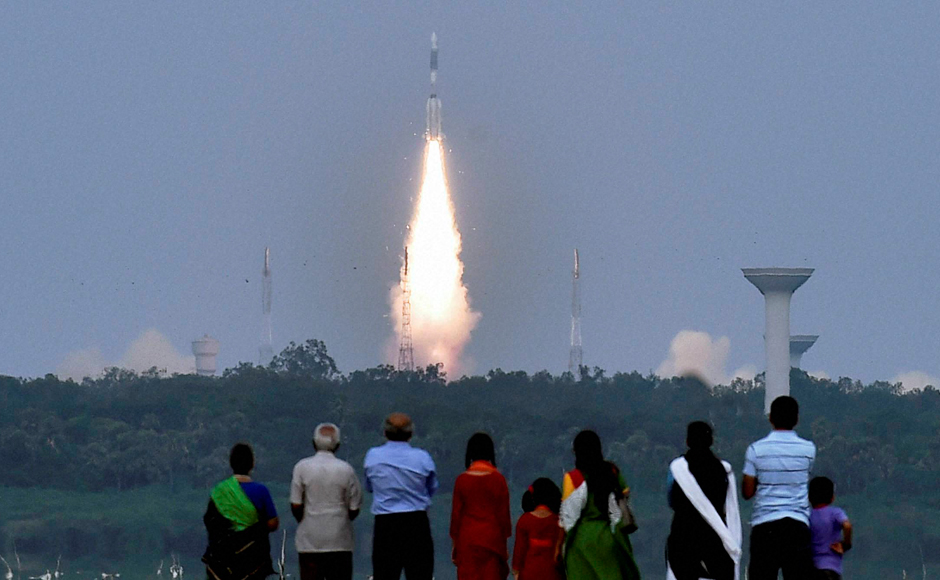India remains glued to the sky as ISRO's GSAT-6 flies off to space from Sriharikota
The Indian Space Research Organisation (ISRO) successfully launched the Geo-synchronous Satellite Launch Vehicle (GSLV) D6 which carried India’s latest communication satellite GSAT-6.
)
Geo-synchronous Satellite Launch Vehicle (GSLV) D6 carrying GSAT-6, lifts off from Satish Dhawan Space Centre in Sriharikota, Andhra Pradesh on Thursday. PTI
)
GSAT-6 is the 25th geostationary communication satellite of India built by ISRO and 12th in the GSAT series. It will provide communication through five spot beams in S-band and a national beam in C-band for strategic users, ISRO said. PTI
)
The 29-hour countdown for this launch began at 11.52 am on Wednesday after the Mission Readiness Review (MRR) committee and Launch Authorisation Board (LAB) cleared the starting of the countdown. PTI
)
Onlookers watch as GSAT-6 lifts off from Satish Dhawan Space Centre in Sriharikota. PTI
)
ISRO Chairman AS Kiran Kumar and other scientists during a press conference after successful launch of GSAT-6 from Satish Dhawan Space Centre (ISRO) at Sriharikota. PTI
see more

No rain in Delhi after cloud seeding trials. Why did the experiment flop?
Delhi conducted cloud seeding experiments to induce artificial rain and reduce pollution but saw no rain due to low moisture in clouds. Despite no rain, the cloud seeding trials led to a slight improvement in air quality, with PM2.5 and PM10 levels dropping in targeted areas. More cloud seeding experiments are planned, depending on atmospheric conditions, to further address Delhi's pollution issues.
More Impact Shorts

)
)
)
)
)
)
)
)



